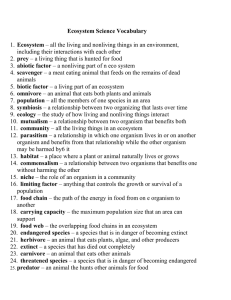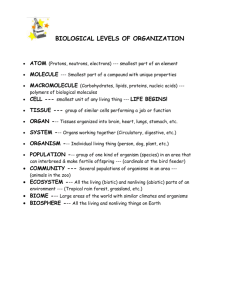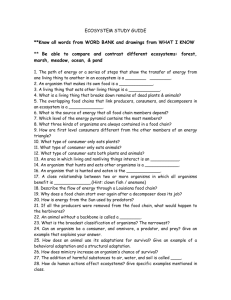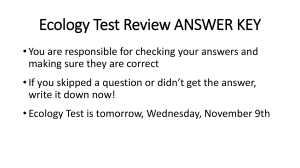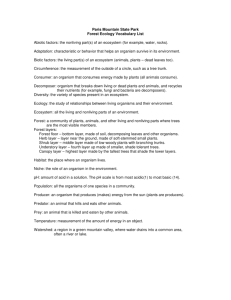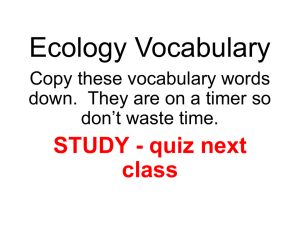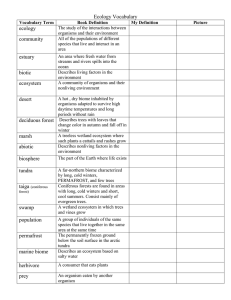Producer Living things that can make its own food. (Plants)
advertisement
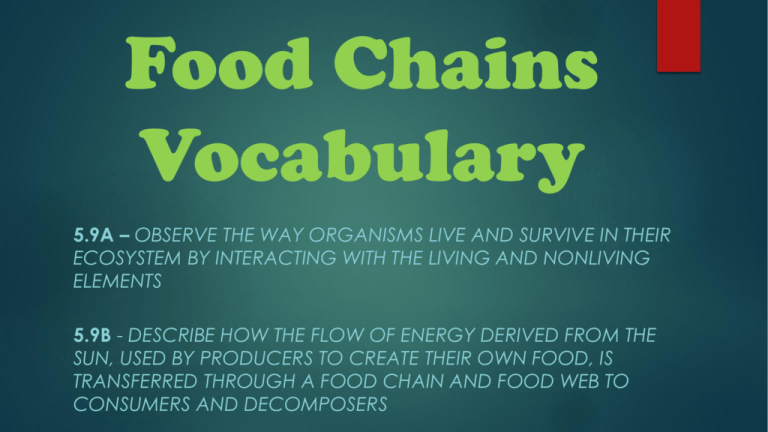
Food Chains Vocabulary 5.9A – OBSERVE THE WAY ORGANISMS LIVE AND SURVIVE IN THEIR ECOSYSTEM BY INTERACTING WITH THE LIVING AND NONLIVING ELEMENTS 5.9B - DESCRIBE HOW THE FLOW OF ENERGY DERIVED FROM THE SUN, USED BY PRODUCERS TO CREATE THEIR OWN FOOD, IS TRANSFERRED THROUGH A FOOD CHAIN AND FOOD WEB TO CONSUMERS AND DECOMPOSERS Ecosystem All living and nonliving things interacting in an environment. LIVING: trees, grass, flowers, deer, wolf, bunny, snake, butterflies, mouse, hawk, bees NONLIVING: rocks, water, air, dead tree branch Habitat Place where organism lives and finds everything it needs to survive Niche Role of plant or animal plays in its habitat How organism acts in environment Where it lives Interaction with other species What it eats/ what eats it Movement on a day-to-day basis Producer Living things that can make its own food. (Plants) Consumer Living thing that cannot make its own food and must eat other living things Just plants Just animals Both plants and animals Herbivore Organism that only feeds on grass and/or plants Horse Cow Mouse Sheep Zebra Koala Grasshopper Elephant Caterpillar Carnivore Organism that only feeds on other animals (meat) Wolf Lion Tiger Orca Shark Dog Hawk Cat Octopus Omnivore Organism that eats both plants and animals Humans Tigers Rhino Tortoise Bear Pig Alligator Cat Racoon Decomposer A living thing that gets energy by breaking down dead organisms and animal waste into simpler substances. Flies Bacteria Worms fungi Snails Beetles Mushrooms Moss Mold Population All organisms of same kind that live together in an ecosystem

